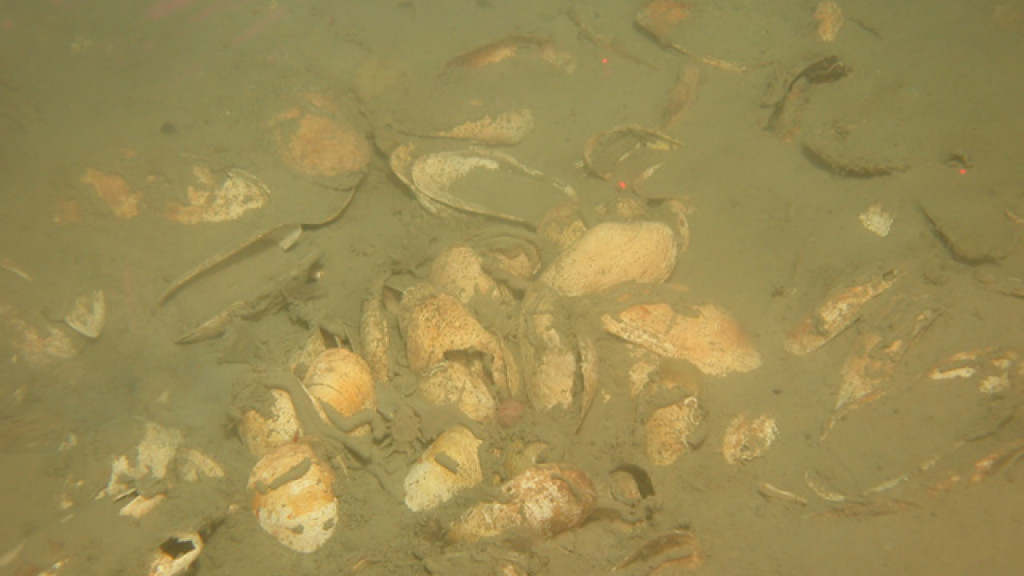Polarstern / CAML expedition: weekly report - an eventful week
By the last weekend, we could already tell that this week would be the most eventful in terms of scientific activities. On Saturday, a Remotely Operated Vehicle (ROV) was deployed to start the search for an underwater gas source and a special community which is associated with such environments on the seafloor. Here, bacteria form the base of the food chain and in contrast to plants, are not dependent on the sun's energy. Their energy requirements are supplied by methane and hydrogen sulphide. Such bacteria live in and on the sediment but also in symbiosis with higher organisms. In the latter case, a simple ecosystem forms around such a gas seepage. The first signs of a so-called "cold seep" ecosystem were found by a US team using a towed video device two years ago. The ROV onboard the Polarstern and probably Germany's most experienced ROV pilot quickly tracked down the very same spot.
In hinsight, it turned out to be like finding the proverbial needle in the haystack. Discreet areas where dissolved gases seep from the sediment into the water column are marked by small (30 centimetre) clusters of a certain species of clam. These organisms absorb the seeping gases thus providing energy to the bacteria living in their gill tissue. Clams benefit from this symbiosis by feeding on the bacteria. These clusters of clams were only located in a very small area. We can consider ourselves lucky that we found them at all. At this stage, we had come as far as our US colleagues did. The big challenge was still ahead of us – to take a sample. This could only be accomplished by extremely precise navigation and dexterity. Other sampling gear, sometimes equipped with video cameras, were also deployed. Helge, our microbiologist, could tell by just smelling the sediment that we had found the needle in the haystack. Olaf, Americo and our team of macrobenthologists enthusiastically freed the first clams from the mud which was retrieved from the bottom of the sea by a grab sampler. Although we did not find any live specimens, we will have sufficient material to answer the following questions after thorough analyses back home in the lab. Why is there, on this particular spot, below the former Larsen B ice shelf, a cold seep – the only one known in Antarctica? Are the numerous dead shells an indicator that this special community suffered from the collapse of the ice shelf?
After we have seized all possibilities of sampling for this area we went on steaming to the northern coast of the Larsen B region. There was one spot of known shallow water depth (+-250m) where, for days before our arrival, strong southerly winds pushed thousands of bizarre looking floating pieces of ice tightly together. It is hard to tell whether this was made of sea ice pushed together by the wind and currents or small chunks of the former ice shelf or glaciers. Alas, we had to look for another suitable sampling site in uncharted territory. During the night the multi-beam echo sounder recorded a so-called iceberg bank. In Antarctica, each submarine elevation with one relatively steep flank usually causes many icebergs to strand. The next morning we went on to sample the fauna at this position. Once again, the footage showed disturbed sediment, mixed with big sea squirts and a few sponges that are so numerous in the eastern Weddell Sea. Close to this spot Uwe Grundmann, the first officer, described the footage on the screen as follows: "this looks exactly like a quarry".
On behalf of all scientists, greetings from the Polarstern
Yours Julian Gutt

